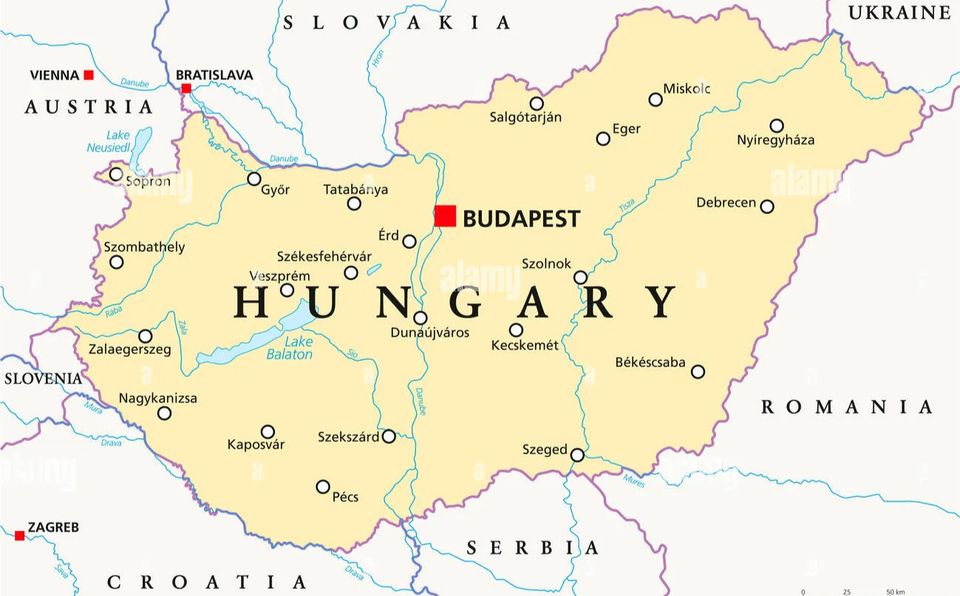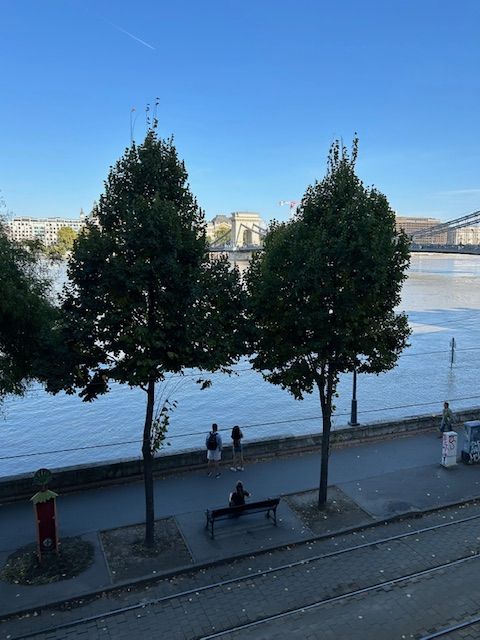
Danube on Friday, September 20
One of the first things I do when arriving in a new place is take a picture from the window of my lodging. This is a picture of the Danube from my room on the Buda side.
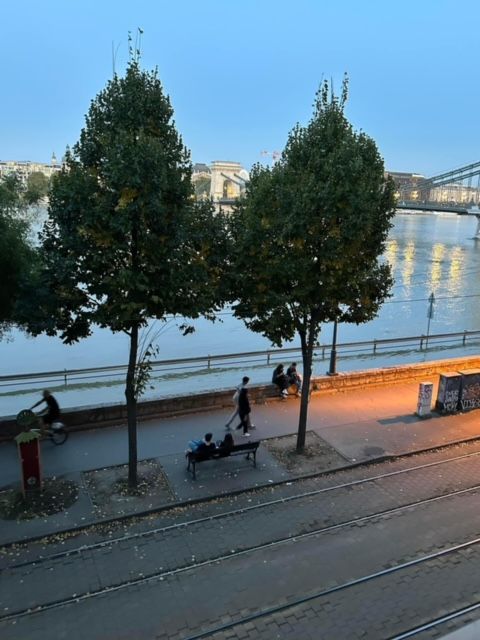
Danube on Monday, September 23
I knew the Danube had risen and flooded its banks. But I didn't see evidence when I took the first picture. This second one was taken 3 days later, a guardrail appeared in the water.

Danube on Tuesday, September 24
Taken the day after the second picture, this third one shows the extent of the flooding. As the flood receded, the complete guardrail appeared with a roadway that had been hidden!

Széchenyi Chain Bridge
This is one of the bridges crossing the Danube to Pest as seen from Castle Hill in Buda. Originally opened in 1849, it was bombed during WW II, rebuilt, and reopened in 1949. In the distance can be seen St. Stephen's Basilica.
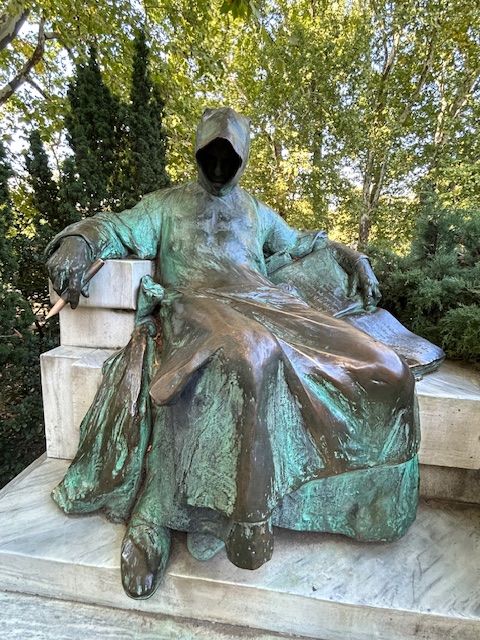
Anonymous Statue
This statue at Vajdahunyad Castle Is of the unknown chronicler at the court of King Béla III who ruled from 1172 to 1196. In his hand is a pen that is stroked by aspiring writers to bring them inspiration.
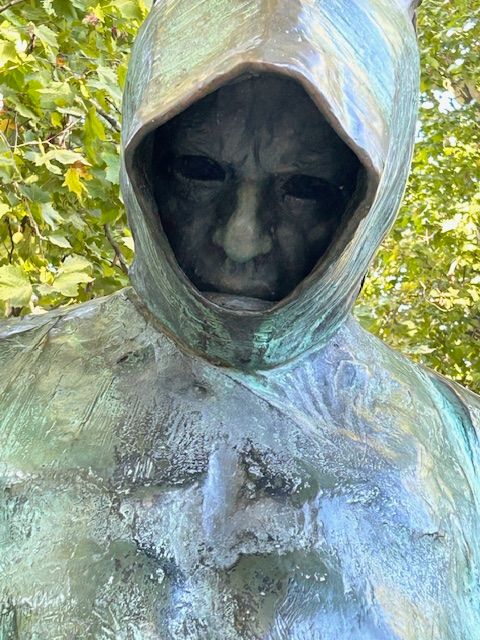
Anonymous Statue close up
The figure is hooded to remind that often history is related from the shadows. The sculpture was created in 1903 by Miklós Ligeti. The unknown chronicler wrote a history of the early Magyars.

The Holy Right
This beautiful reliquary is in St. Stephen's Basilica and holds St. Stephen's right hand. King Stephen died in 1038 and was canonized in 1083. The hand had quite a journey, it was kept in Bihar (Transylvania), Ragusa (now Dubrovnik), and Vienna before being brought to Buda in 1771.

The Holy Right of St. Stephen
Originally, the relic was his whole right arm. After it was determined during the process of canonization to not have decayed, it was removed. Around the time it was in Dubrovnik, the monks cut it apart, and sent the upper arm to Lemburg and the lower arm to Vienna. I find the idea fascinating, though a little creepy as well.

Roman Stone
Corvin Square was supposedly a grave yard when the Romans occupied this area. This stone remains. I was unable to find information about it, but I liked the look.

Holocaust Tree of Life Memorial
The Dohány Street or Great Synagogue is the largest synagogue in Europe. It was built between 1854 and 1859. The Tree of Life aka Emanuel Memorial Tree is in the Raoul Wallenberg Memorial Park at the back. It was created by Imre Varga in 1991 and has the names of Hungarian Jews killed during the Holocaust inscribed on the leaves.
